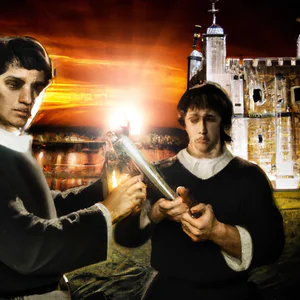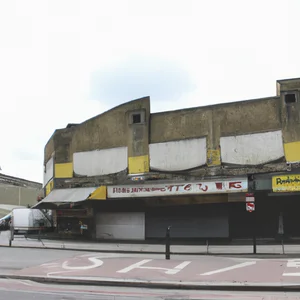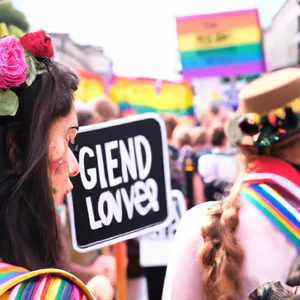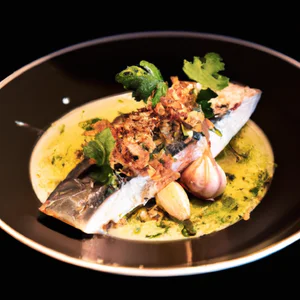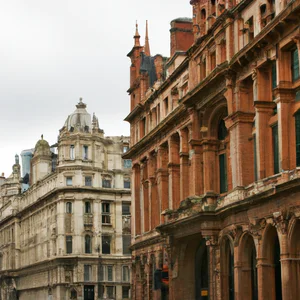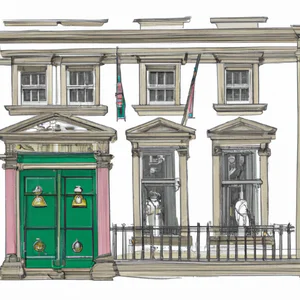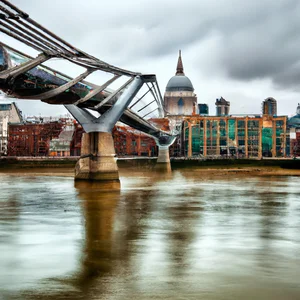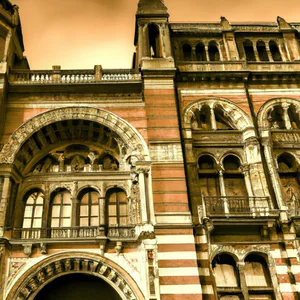Book your experience
London Fashion Week: the best of British and international fashion
Hey, let’s talk about London Fashion Week, which is a really crazy event, isn’t it? It’s as if every year, for a couple of days, the English capital was transformed into a giant catwalk, where the best of British and international fashion compete in style. I don’t know if you’ve ever gone there, but it’s a bit like immersing yourself in a parallel world where clothing becomes art.
In short, there is everything: from models that seem to have come out of a dream, to extravagant creations that make you think “but who wears those?”. The thing that always strikes me is seeing how designers manage to mix tradition and innovation, like a chef who takes a grandmother’s recipe and makes it her own with a modern touch.
I remember once, while I was wandering around the various fashion shows, I saw a dress that looked like it was made of wrapping paper! It was so special that I thought “Yes, but who has the courage to wear it?”. Yet, somehow, whoever wore it made it seem perfect. Maybe I would never wear it, but hey, who am I to judge?
It must also be said that, sometimes, fashion can seem a little distant from reality. It makes me think of the time I tried on a coat from a famous designer – it cost as much as rent! Yet, there is something magical in the air during Fashion Week. The people, the outfits, the photos they take… it’s all a big mess, but beautiful.
And, well, what can I say? Each edition has its own personality, with trends that come and go like the waves of the sea. Some say that fashion is a reflection of society and, in fact, I have the impression that in that context you can really feel the pulse of time. Maybe I’m not 100% sure, but I like to think so. And you, have you ever followed something similar?
The big names of British fashion on the catwalk
The emotion of a catwalk
The first time I set foot at London Fashion Week, the smell of hairspray and the rustle of fabrics on the catwalk overwhelmed me. I still remember the thrill when, among the rows of journalists and influencers, I saw the famous British designer Vivienne Westwood appear, whose iconic creations have marked the history of fashion. Each collection is not just a set of clothes, but a manifesto of culture and rebellion that represents the soul of London.
An environment that celebrates excellence
London Fashion Week is not only a stage for well-known names like Burberry, Alexander McQueen and Stella McCartney, but also a hub for emerging designers looking to get noticed. According to an article by Vogue UK, London Fashion Week has been recognized as one of the most influential platforms globally for launching new trends and talent. The catwalks are animated by a variety of styles that reflect the cultural diversity of the city.
An insider tip
If you want an authentic experience, don’t limit yourself to just following the main fashion shows. A little-known tip is to attend off-schedule events, where emerging designers present their collections in alternative, more intimate spaces. These events offer the opportunity to interact directly with the creators and discover works that you won’t easily find in boutiques.
Fashion and culture: an indissoluble bond
London has a long and fascinating history in the world of fashion. From ** Mary Quant ** and the miniskirt movement in the 1960s, to ** John Galliano ** and his bold approach to haute couture, British fashion has consistently challenged convention. Each collection presented on the catwalk is a reflection of this cultural heritage, which continues to influence future generations.
Sustainability on the catwalk
It is important to note that London Fashion Week is increasingly embracing sustainability practices. Many designers are opting for recycled materials and responsible production methods, contributing to a greener future for the industry. This approach not only improves the image of fashion, but also invites consumers to reflect on their choices.
An immersive experience
If you are passionate about fashion, don’t miss the opportunity to visit the Design Museum during Fashion Week. Temporary exhibitions dedicated to the big names in British fashion offer a closer look at their inspirations and creative process.
Common myths to dispel
A common misconception is that London Fashion Week is only accessible to those who work in the industry. However, many events are open to the public, and presentations by emerging designers can be a great way to enter the world of fashion without having to be an insider.
Final reflection
London Fashion Week is more than just a celebration of fashion; it is a crossroads of ideas, cultures and innovation. Whether you’re a fashion enthusiast, a budding designer or simply curious, this week invites you to explore a vibrant and ever-evolving universe. What new trends would you like to see emerge from the next edition?
Emerging trends: designers to discover
An unexpected encounter
It was a cool September morning in London and I was in Shoreditch, a vibrant and creative neighborhood, where art mixes with fashion in an environment that breathes innovation. Walking through the streets, I came across a small showroom: the work of a young designer, who was presenting his collection inspired by recycled fabrics. His passion and his fresh approach to fashion impressed me deeply. This chance meeting made me reflect on the importance of discovering the emerging talents who are shaping the future of British fashion.
Designers to discover
In recent years, London has seen the emergence of a new wave of bold and innovative designers. Among these, Richard Quinn, known for his floral fabrics and dramatic silhouettes, and Simone Rocha, who plays with romance and craftsmanship, are just some of the names that are gaining international attention. But let’s not forget the lesser-known talents: designers like ** Ahluwalia **, who combines Indian heritage with British culture, and ** Cecile Bahnsen **, who brings a Scandinavian touch to her pieces.
An insider tip
If you really want to immerse yourself in the world of emerging fashion, visit London Fashion Showrooms. This space is dedicated to emerging designers and offers the opportunity to discover innovative collections before they reach the global market. Additionally, many designers participate in networking events and presentations open to the public, where you can get in direct contact with them.
Cultural and historical impact
British fashion has always had a strong connection with popular culture and social movements. Designers such as Vivienne Westwood and Alexander McQueen have challenged norms and brought issues of great social relevance to the fore. Today’s emerging designers continue in this vein, tackling issues such as sustainability and cultural identity.
Sustainable tourism practices
Discovering new designers is not only a journey into the world of fashion, but it can also be done in a sustainable way. Many of the collections presented by emerging designers use recycled fabrics or ethical production methods. Supporting these talents means embracing a more responsible fashion future.
A vivid atmosphere
Imagine walking the streets of London, surrounded by colorful murals and independent boutiques, while the air is filled with a mix of creativity and history. Every corner tells a story, every designer has a unique vision, making the city a stage for innovation.
An experience worth trying
For a unique experience, take part in a fashion masterclass in one of the designer studios emerging. You will have the opportunity to learn design techniques and create a unique piece under the guidance of a professional.
Myths to dispel
A common misconception is that emerging fashion is reserved only for industry insiders or fashionistas. In fact, London offers everyone the opportunity to explore and appreciate these new visions through accessible public events and exhibitions.
Final reflection
Fashion is an expression of society and its transformations. As you discover emerging designers, I invite you to consider: what is the message each piece carries with it? Fashion is not just clothes; it is a powerful tool for communication and change.
London as the capital of sustainable fashion
One rainy afternoon in London, while taking refuge in a cozy café in the Shoreditch neighbourhood, I was lucky enough to stumble upon an informal chat with an emerging designer. She passionately told me about her work, made entirely with recycled materials and sustainable techniques. This chance meeting was not only a fascinating moment, but opened my mind to the true essence of London as an epicenter of sustainable fashion.
Sustainable fashion in London: an evolving landscape
In recent years, London has seen an explosion of initiatives focused on sustainability, with designers embracing eco-friendly and innovative practices. According to London Fashion Week report, 2023 marked a 30% increase in collections presented by eco-friendly brands. Brands like Stella McCartney and Erdem not only place an emphasis on sustainability in their production processes, but also promote awareness of circular fashion and reducing waste.
An insider tip
A little-known tip for those visiting London during Fashion Week is to attend pop-up events organized by local designers in lesser-known neighbourhoods, such as Hackney and Camden. These events offer unique opportunities to interact with creators and purchase one-of-a-kind pieces at affordable prices, while supporting the local economy.
The cultural impact of sustainable fashion
London is not just a fashion capital, but a symbol of cultural change. The growing attention to sustainable fashion reflects a broader social awareness about the environmental impact of our choices. This movement has deep roots in the history of British fashion, where designers like Vivienne Westwood already began exploring the intersection between fashion and activism years ago.
Responsible tourism practices
Visiting London with an eye on sustainability also means choosing to support shops that favor made in Britain and that adopt ethical practices. Many of these shops are located in local markets, where visitors can discover unique pieces and contribute to a greater cause at the same time.
Immerse yourself in the atmosphere
Imagine walking the streets of Notting Hill, surrounded by bright colors and unique boutiques. The air is filled with creativity, and every corner seems to tell a story. Sustainable fashion is not just a trend: it is a way of life that celebrates originality and responsibility.
An activity worth trying
If you’re looking for an authentic experience, a visit to Sustainable Fashion Collective is a must. Here you can participate in workshops and seminars that delve into the art of sustainable fashion, from conscious shopping to creating clothing.
Myths and misconceptions
A common misconception is that sustainable fashion is expensive and inaccessible. In fact, many designers offer options at varying prices, and local markets are a great source of deals. Sustainability must not be a luxury, but can and must be within everyone’s reach.
A final reflection
Sustainable fashion in London is an ever-evolving journey, full of surprises and innovations. I invite you to ask yourself: How can your fashion choices reflect a commitment to a more sustainable future? Next time you explore the streets of this vibrant capital, consider being part of a movement that not only dresses, but also cares for our planet.
Exclusive events: how to experience Fashion Week
A personal experience
I vividly remember the first time I walked through the doors of Somerset House during London Fashion Week. The atmosphere was electric, a mix of anticipation and creativity palpable in the air. As photographers snapped photos of famous faces and models paraded in breathtaking gowns, I felt part of a world where fashion transcended mere clothing and became a means of cultural expression. Each show told a story, revealing not only the talent of the designers, but also the emerging trends that would influence the way we dressed in the months to come.
Practical information
London Fashion Week is held twice a year, in February and September, and attracts not only industry professionals, but also fashion enthusiasts from around the world. To participate in the exclusive events, it is essential to register in advance. Visit the official website of the British Fashion Council for updated information on how to obtain passes for the shows and side events. Don’t forget to check the social media of designers and fashion houses for possible invitations to pop-up events and private presentations.
Unconventional advice
If you want a truly unique experience, consider attending one of the unofficial “after-parties”. These events, often held in unusual venues such as art galleries or rooftop bars, offer the chance to meet designers, models and influencers in a more relaxed environment. To find out where they are held, talk to locals or follow the social channels of those who are already in the fashion scene.
Cultural and historical impact
London Fashion Week is not just a fashion event; it is a reflection of ever-evolving British culture. The city has a long history of innovation in the industry, with iconic designers such as Alexander McQueen and Vivienne Westwood challenging conventions and redefining the concept of beauty and style. Each edition of Fashion Week brings with it a cultural legacy that celebrates diversity and inclusiveness, fundamental elements of contemporary fashion.
Sustainable tourism practices
With increasing environmental awareness, many Fashion Week events are adopting sustainable practices. From recycling materials used in shows to promoting designers who use eco-friendly fabrics, London Fashion Week is becoming a stage for responsible fashion. Choose to participate in events that promote sustainability and discover how fashion can be a driver of positive change.
An activity worth trying
If you are in the city during Fashion Week, don’t miss the “Fashion Hub”, an area dedicated to emerging designers and new trends. Here you can explore collections of fresh talent and participate in creative workshops. It’s an opportunity to immerse yourself in the contemporary fashion scene and discover the future protagonists of the sector.
Myths and misconceptions
A common misconception is that Fashion Week is only accessible to those who work in the industry. In fact, there are many events open to the public and opportunities for laypeople to immerse themselves in the vibrant atmosphere of the event. Don’t be put off if you’re not a fashion professional; every enthusiast can find her place in this world.
Final reflection
Attending London Fashion Week is more than just an event; it is a journey into creativity and innovation. We invite you to consider: how fashion can influence your daily life and which ones stories could you tell through your personal style? The next time you flip through a fashion magazine or choose an outfit, remember that behind every trend there is a story, a designer and a vision that deserve to be celebrated.
Local experiences: markets and hidden boutiques
An unexpected encounter
On my last visit to London, I was lucky enough to get lost in the winding streets of Shoreditch. As I explored the neighborhood, I was struck by a small pop-up market held in a former brickyard. Among the colorful stalls, I met an emerging designer who was presenting his creations, made with recycled fabrics and sustainable techniques. This chance encounter not only enriched my London experience, but also opened my eyes to the vibrant and authentic world that lies behind the facade of mass fashion.
Where to find hidden gems
London is a paradise for fashion lovers seeking authentic experiences. Markets such as Broadway Market in Hackney offer a selection of independent boutiques and local artisans. Every Saturday, visitors can discover unique clothing, accessories and works of art, all made with passion and a keen eye for sustainability. Other places not to be missed include Portobello Market, famous for its vintage clothes, and Spitalfields Market, where contemporary influences mix with traditional craftsmanship.
An insider tip
A little-known tip concerns second-hand shops and charity shops. Places like Oxfam and TRAID not only offer clothes at rock-bottom prices, but they also often contain one-of-a-kind pieces from up-and-coming designers. These stores not only help reduce the environmental impact of fashion, but also support local charitable causes. Don’t forget to scour their shelves - you might find your next collector’s item.
A rich cultural heritage
British fashion culture is intrinsically linked to the concept of individuality and self-expression. From the boutiques of Carnaby Street, which gave birth to the mod movement of the 1960s, to contemporary markets that celebrate the talent of emerging designers, London is a melting pot of styles and influences. These spaces represent a continuous evolution of fashion, reflecting the social and cultural dynamics of the city.
Towards responsible tourism
In an age where sustainability is more important than ever, exploring local markets and hidden boutiques is one way to support the local economy and reduce the environmental impact of tourism. Many of these stores use eco-friendly materials and ethical manufacturing practices, thus contributing to a lighter footprint on our planet.
An experience not to be missed
If you want to immerse yourself in the true essence of London fashion, I recommend taking part in a fashion walk led by a local. These walks offer a unique opportunity to discover hidden boutiques and markets, while an expert shares fascinating stories about the fashion scene. These experiences not only enrich your knowledge, but also allow you to connect with the local community.
Myths to dispel
A common misconception is that London is only accessible through big name brands and high street stores. In reality, the true beauty of London fashion is found in the small details and stories of the designers who work tirelessly to create something unique. Fashion is not just a matter of labels, but of personal expression and creativity.
A final reflection
As you venture into the beating heart of London fashion, ask yourself: what kind of story do you want to tell through your style? Fashion, like the city itself, is an ever-evolving journey, and local experiences can offer you a unique perspective and authentic that you will hardly find elsewhere.
History of British fashion: a journey through time
A personal experience
I vividly remember the moment I first set foot in the Victoria and Albert Museum in London. The wonder I felt at the collection of historic clothing made me realize how deeply British fashion was intertwined with the country’s culture and history. Each creation, from the Victorian corset to the bold dresses of the 1980s, told a story of innovation, daring and social change.
A blast from the past
British fashion is not just about style; it is a reflection of the sociopolitical transformations that have marked the United Kingdom over the centuries. From the industrial revolution, which led to increased textile production, to the punk movement of the 1970s, which challenged convention, each era has left its mark. Iconic designers such as Alexander McQueen and Vivienne Westwood have redefined not only how we dress, but also cultural norms, bringing British fashion onto the world stage.
Insider tip
A little-known tip for fashion enthusiasts is to visit the Museum of London Fashion. Situated in the heart of the capital, this museum offers a fascinating and often overlooked insight into London’s fashion history, with changing exhibitions highlighting emerging designers and historic trends. Inside, you can find unique pieces and stories that are not easily found in traditional tourist routes.
The cultural impact
British fashion has had a significant cultural impact, not just in the UK, but around the world. It influenced global trends and gave rise to movements that challenged cultural norms. For example, the mod movement of the 1960s not only influenced fashion, but also marked a shift in music and youth culture, with icons such as The Who and The Beatles wearing clothing that reflected a new spirit of rebellion and freedom .
Sustainability and responsibility
Today, British fashion is increasingly oriented towards sustainable practices. Designers like Stella McCartney are pioneers in the use of eco-friendly materials and the promotion of ethical fashion. Tourists can contribute to this sustainable movement by visiting local fashion events and vintage markets, where unique and sustainable pieces can be found.
Immersion in the atmosphere
Walking along the streets of Soho or Covent Garden, you are surrounded by a vibrant and creative atmosphere. Independent boutiques and vintage markets tell stories of style and innovation, where every corner seems to pulsate with life and inspiration. For fashion enthusiasts, every visit becomes an opportunity to discover the profound connection between sartorial art and British culture.
An activity worth trying
For a unique experience, I recommend taking part in a fashion workshop at one of London’s design academies. Here, you can learn traditional tailoring techniques and closely understand the creative process behind each dress. It’s a fascinating way to immerse yourself in the world of fashion and appreciate the story behind each creation.
Myths to dispel
A common misconception is that British fashion is just expensive and inaccessible. In fact, London offers a myriad of options, from affordable boutiques to second-hand markets, allowing anyone to explore and embrace their personal style without emptying their wallet.
Final reflection
British fashion is a fascinating journey through time, which invites you to reflect on your identity and the meaning of personal expression. What story does your style tell? Discovering British fashion can give you a new perspective on how to see not only your wardrobe, but also the world around you.
Fashion Week and pop culture: surprising connections
A meeting that changed everything
I vividly remember the first time I set foot in the vibrant world of London Fashion Week. As I lost myself in the streets of Soho, the palpable energy of the city seemed to blend with the designers’ bold creations. An outdoor catwalk, a group of young artists painting murals inspired by the looks they had just shown, and the music of a local DJ making the air vibrate. That evening demonstrated that fashion is not just fabric and stitching, but an art form that reflects and shapes pop culture.
An unbreakable bond
London Fashion Week is not just an event for industry insiders; it is a crossroads where fashion, music, art and social trends intertwine. Big names like Vivienne Westwood and Alexander McQueen have always found inspiration in pop culture, bringing not only clothes, but also political and social statements to the catwalk. Source: British Fashion Council.
Insider tip
If you want to fully immerse yourself in the atmosphere of Fashion Week, don’t just watch the shows. Try attending pop-up events hosted by emerging designers in London’s creative neighborhoods. An example is the Pop-Up Fashion Hub in Shoreditch, where you might meet designers and artists sharing their visions and creations in real time.
The cultural impact
British fashion has always played a crucial role in shaping global pop culture. From the punk movements of the 1970s, which challenged social norms, to recent collaborations between fashion designers and musicians, London remains a battleground for cultural innovation. The catwalks therefore become a stage to comment on and reflect on contemporary social issues.
Sustainability and responsibility
In an era where sustainability has become an imperative, London Fashion Week has begun to integrate eco-friendly practices. Many emerging designers are exploring the use of recycled materials and responsible manufacturing techniques. For example, the Rejina Pyo brand has gained attention for its ethical approach, proving that beauty doesn’t have to compromise our planet.
Hands-on experience
If you want a unique experience, take a guided tour of Soho’s fashion boutiques, where you can discover emerging brands and exclusive collections. Don’t forget to bring a camera: every corner is a work of art waiting to be immortalized!
Myths to dispel
A common misconception is that Fashion Week is only accessible to a select elite. In fact, many side events and exhibitions are open to the public. Don’t hesitate to check out the official London Fashion Week website to stay up to date on free events and networking opportunities.
Final reflection
The connection between fashion and pop culture is an ever-evolving cycle. How is your perception of fashion evolving? Is it more than just a dress or is it a reflection of our identities and aspirations? Next time you’re walking the streets of London, ask yourself: how can I be part of this creative conversation?
Unconventional advice for fashion enthusiasts
During my first visit to London Fashion Week, I remember attending a fashion show that was held in a repurposed old warehouse in the Shoreditch neighbourhood. It wasn’t the typical elegant stage you would expect, but the atmosphere of creativity and innovation was palpable. Here, designers dared to break the mold, presenting collections that challenged convention and embraced authenticity. This event opened my eyes to the importance of exploring even the lesser-known corners of London fashion.
Discover the hidden gems of fashion
While London Fashion Week is famous for its A-list names, there’s a whole world of emerging designers who deserve attention. Finding local talent performing in alternative spaces, such as art galleries or small theaters, can be an incredibly rewarding experience. Sites like BFC Show Space and The Store Studios often host events where new designers can showcase their work. Check the British Fashion Council website for up to date information on these events.
Unconventional advice? Don’t just follow the most famous fashion shows. Pop into the pop-ups and fashion markets taking place across London during Fashion Week. Not only will you have the opportunity to purchase unique pieces, but you may also meet the designers themselves, making authentic connections and discovering fascinating stories behind each creation.
A cultural impact that goes beyond the catwalk
British fashion has a long history of innovation and rebellion, mirroring the evolution of popular culture in the UK. From 1970s punk fashion that challenged social norms to contemporary designers who embrace sustainability, London is a crossroads of ideas that have shaped the global fashion landscape. This is not just an event; it is a celebration of a cultural identity that continues to evolve.
In an age where sustainability has become a necessity, many emerging designers are embracing responsible practices. Opting for recycled or ethical materials has become a hallmark of these new talents, contributing to a more sustainable future for the fashion industry.
An experience not to be missed
If you’re in London during Fashion Week, don’t miss the chance to visit fashion markets like Brick Lane Market or Spitalfields Market, where you can discover emerging designers and boutiques local. Here, you can immerse yourself in a vibrant atmosphere, savor delicious food and find unique fashion items that tell authentic stories.
Final reflections
London Fashion Week isn’t just for industry insiders; it’s an opportunity for everyone to explore and appreciate the beauty of creativity. Have you ever thought about discovering fashion in a different way, beyond the catwalks? What stories might you encounter when visiting these lesser-known events? Fashion is a universal language, and London is its stage.
Meetings with emerging designers and their work
When I first stepped into an emerging designer’s workshop in East London, I never imagined coming face to face with a true fashion artist. The soft light of the workshop was illuminated by colorful fabrics scattered everywhere, while the noise of the sewing machines mixed with laughter and chatter. That day marked the beginning of a new passion of mine for fashion: discovering the raw talent that lies behind every creation.
An opportunity not to be missed
During London Fashion Week, you will have the chance to meet emerging designers in their workspaces, taking part in events such as the “Designer Showrooms” or the “Meet the Designer” sessions organized by the British Fashion Council. These events will not only allow you to see their collections, but also hear the stories behind each piece. As reported by the official website of London Fashion Week, many of these designers are driven by the desire to express a new aesthetic, which challenges conventions and celebrates diversity.
An insider tip
Here’s a little-known tip: bring a small camera or notebook with you. Many emerging designers will be happy to share details of their materials and inspirations with you, but they may not have time for an in-depth chat. Having a way to document your experience will allow you to take a piece of that creativity away with you.
The cultural impact
The British fashion scene is historically a melting pot of ideas and cultural influences. Today’s emerging designers continue this tradition, mixing styles and techniques from around the world. Their ability to tell stories through fashion offers a window into contemporary society, addressing issues such as identity, sustainability and inclusiveness.
Fashion and sustainability: a responsible future
Many young designers are embracing sustainable practices, using recycled materials or ethical production techniques. This trend is not only a response to today’s environmental challenges, but also represents a new narrative for fashion: a narrative that values beauty and responsibility. During Fashion Week, look for designers presenting eco-friendly collections, highlighted by initiatives such as Positive Fashion.
An experience that leaves its mark
Attending a workshop or networking event with emerging designers is an unmissable way to connect with the future of fashion. You may find inspiration for your personal style or even discover a new designer to follow.
Myths to dispel
A common misconception is that fashion is only for celebrities and the rich. In reality, London Fashion Week is open to all, and emerging designers often seek to create for a more diverse clientele, with affordable prices and an inclusive vision.
In conclusion, I invite you to reflect: which fashion stories are ready to be told? Maybe you could be the one to discover the next great talent! If you have the opportunity to experience this event, don’t hesitate to immerse yourself in the creativity and innovation that London has to offer.
Conscious shopping: the value of made in Britain
When I visited a small atelier in the heart of Shoreditch, I was struck by the passion and dedication that animated every corner of that workshop. It was a spring afternoon and the air was filled with creativity. The designers, a duo of friends, told me how each piece in their collection was handmade, using locally produced fabrics. This experience opened my eyes to the importance of made in Britain, not just as a mark of quality, but as a symbol of sustainability and community.
The importance of made in Britain
The term made in Britain is not just a label, but encompasses an entire universe of artisan value and innovation. Now more than ever, consumers are paying attention to where and how their purchases are made. According to a report by The British Fashion Council, 63% of British consumers say they want to support brands that produce locally. This trend is not just a question of fashion, but a real cultural and social necessity.
An insider tip
Here’s a tip that few people know: when you visit London, ask boutique managers about the stories behind the pieces on display. Often, these professionals are happy to share anecdotes and details about the production processes, revealing little curiosities about the materials used and the work of the artisans. This will not only enrich your shopping experience, but will allow you to appreciate the authentic value of the product.
Cultural and historical impact
Made in Britain has deep roots in the history of British fashion. During the 19th century, the United Kingdom was the hub of the textile industry, and brands like Burberry and Liberty helped define the concept of British luxury. Today, this tradition lives on, with emerging designers seeking to keep the country’s artisan heritage alive by blending innovation and tradition.
Sustainable practices
Many British brands are embracing sustainable tourism practices, such as the use of recycled materials and environmentally friendly manufacturing processes. For example, the Reformation brand has implemented a business model that promotes fabric reuse and waste reduction. Supporting these brands not only helps the local economy, but also contributes to a greener future.
An experience not to be missed
To fully experience the value of Made in Britain, don’t miss the Brick Lane market, where you can find a vast range of garments and accessories made by local designers. Here, among the colorful stalls and vibrant atmosphere, you will have the opportunity to discover unique pieces and meet the artists behind their creations.
Myths to dispel
A common misconception is that products made in Britain are necessarily more expensive. In fact, many emerging designers offer affordable pieces without compromising on quality. Investing in local fashion is not only an act of support, but also a smart choice for your wardrobe.
Final reflection
The next time you purchase an item of clothing, I invite you to consider not only the price, but also the story and value behind that product. What does made in Britain mean to you? Is it just a label or is it a way to connect with the culture and community around us?

 Architecture and Design
Architecture and Design Cities and Regions
Cities and Regions Culture and History
Culture and History Events and Festivals
Events and Festivals Fashion and Shopping
Fashion and Shopping Food and Wine
Food and Wine Nature and Adventure
Nature and Adventure Unique Experiences
Unique Experiences


















